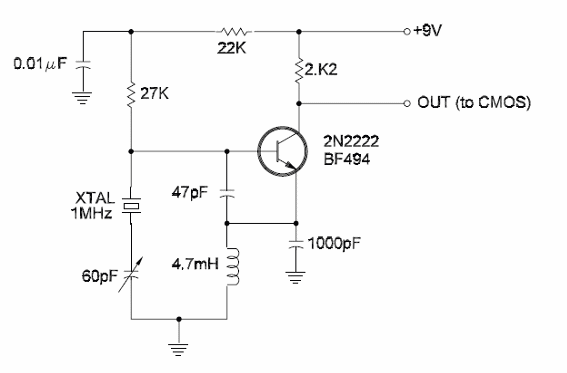This circuit doesn't use CMOS functions, but instead a bipolar transistor. The main feature for this circuit is its ability to drive a CMOS input. In the basic application shown in figure bellow the circuit produces a 1 MHz signal, but the crystal can be changed in a wide band of values. However, remember that CMOS le have frequency limits based on the sourced voltage. The capacitors must be ceramic types and the inductance may be altered if other frequencies are produced. The transistor is the BF494, but any general-purpose silicon transistor will function in this circuit, such as the 2N2222, BF495, etc.




